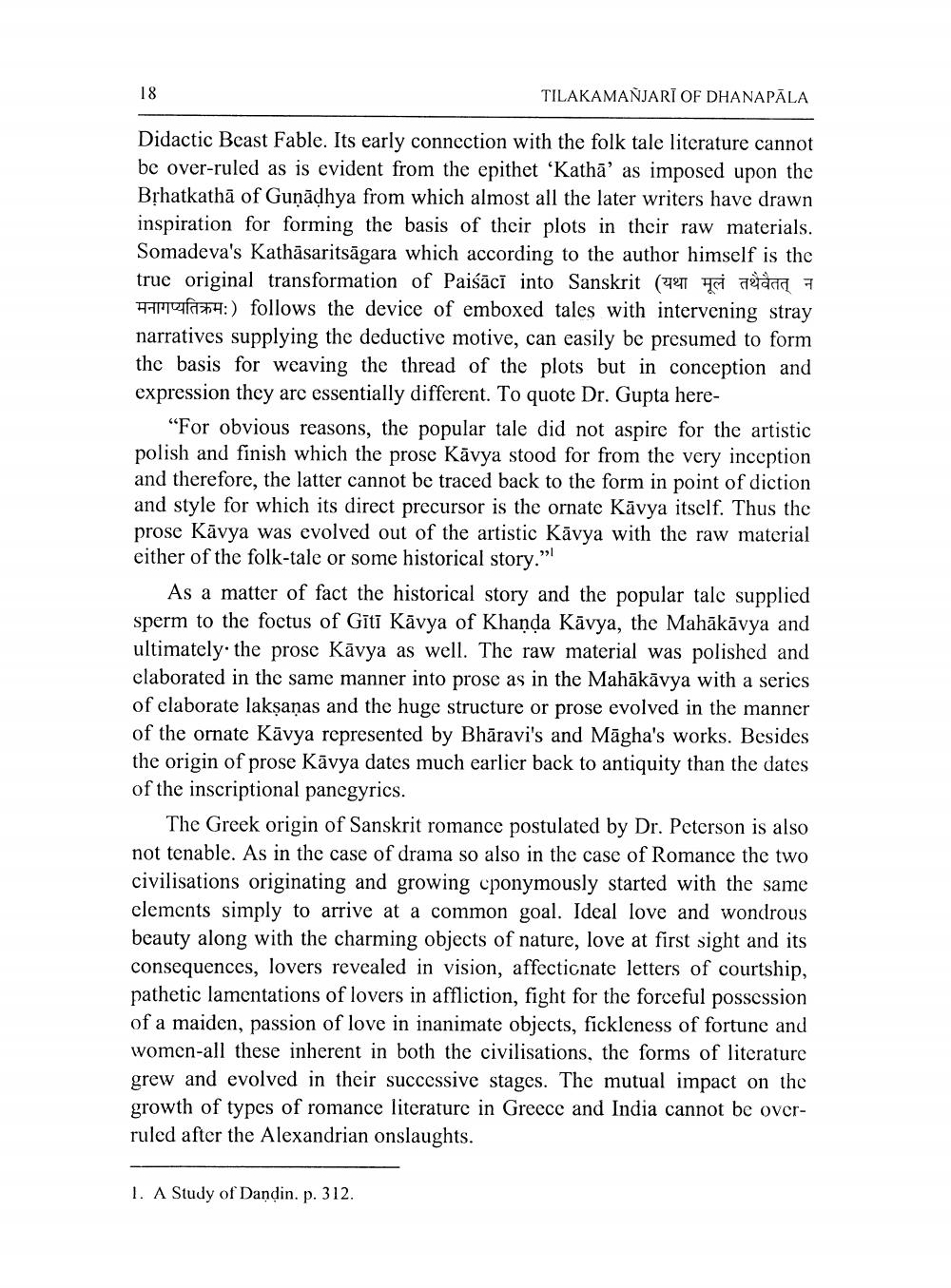________________
TILAKAMANJARI OF DHANAPALA
Didactic Beast Fable. Its early connection with the folk tale literature cannot be over-ruled as is evident from the epithet 'Katha' as imposed upon the Bṛhatkatha of Gunadhya from which almost all the later writers have drawn inspiration for forming the basis of their plots in their raw materials. Somadeva's Kathasaritsägara which according to the author himself is the true original transformation of Paisact into Sanskrit (i având a :) follows the device of emboxed tales with intervening stray narratives supplying the deductive motive, can easily be presumed to form the basis for weaving the thread of the plots but in conception and expression they are essentially different. To quote Dr. Gupta here
18
"For obvious reasons, the popular tale did not aspire for the artistic polish and finish which the prose Kavya stood for from the very inception and therefore, the latter cannot be traced back to the form in point of diction and style for which its direct precursor is the ornate Kävya itself. Thus the prose Kavya was evolved out of the artistic Kavya with the raw material either of the folk-tale or some historical story."
As a matter of fact the historical story and the popular tale supplied sperm to the foctus of Giti Kavya of Khanda Kavya, the Mahäkävya and ultimately, the prose Kavya as well. The raw material was polished and elaborated in the same manner into prose as in the Mahäkävya with a series of claborate lakṣaṇas and the huge structure or prose evolved in the manner of the ornate Kavya represented by Bhāravi's and Magha's works. Besides the origin of prose Kavya dates much earlier back to antiquity than the dates of the inscriptional panegyrics.
The Greek origin of Sanskrit romance postulated by Dr. Peterson is also not tenable. As in the case of drama so also in the case of Romance the two civilisations originating and growing eponymously started with the same elements simply to arrive at a common goal. Ideal love and wondrous beauty along with the charming objects of nature, love at first sight and its consequences, lovers revealed in vision, affectionate letters of courtship, pathetic lamentations of lovers in affliction, fight for the forceful possession of a maiden, passion of love in inanimate objects, fickleness of fortune and women-all these inherent in both the civilisations, the forms of literature grew and evolved in their successive stages. The mutual impact on the growth of types of romance literature in Greece and India cannot be overruled after the Alexandrian onslaughts.
1. A Study of Dandin. p. 312.




